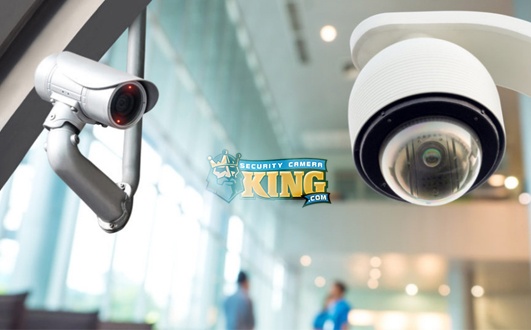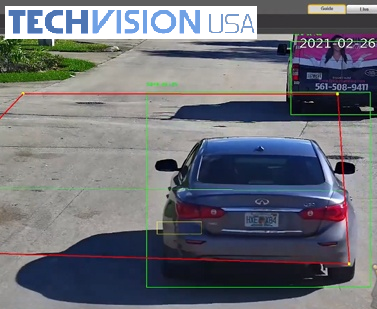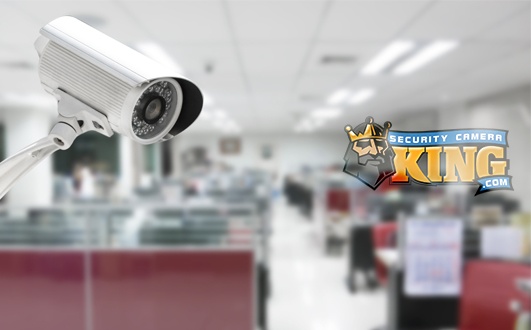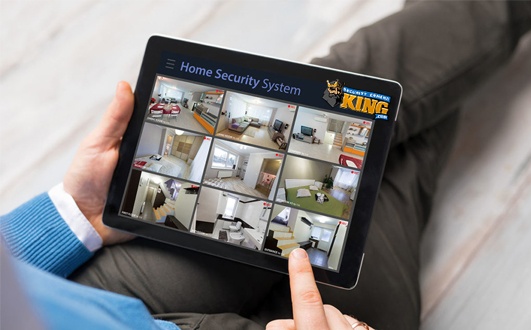
The events that have happened in the news this past decade have ignited the security industry with many new devices to lock down your area of operation. Since the expansion of security implementation across the planet there have been growing exponentially and confirmed concerns with access control usage such as people being trapped in burning buildings. Problems occur in the system design when implementing a system to secure the perimeter of a building and restrict egress from the building. Access control methods such as using the employee badge or radio frequency key card (RFID) to enter and exit may not be appropriate in an emergency situation, especially since people have a tendency to panic. Professional security access control companies can take steps to reduce or all together stop the negative impact that safety regulations require for egress of a building. Now let’s dive into how safety goals and access control security can be combined with exit points and alarm triggers.
Exit locations controlling access is the main concern from security professionals everywhere and creates strife between security and Fire safety regulators. While it is allowed to lock your doors to prevent unwanted access to the building in fire code requirements, it is never allowed to inhibit egress from a building. National Fire Protection Association’s NFPA Life states that every person within the building must be able to exit all doors in their path without use of tools, special knowledge, or effort for operation from the outside to open the door. In short, the path a person takes should be unobstructed to the exit and the door should be able to be open via a crash bar, lever, or very obvious huge button with large lettering that reads PUSH TO OPEN.
In most situations that address access control implementation dictates that door locks from the inside or egress side of door must open during events such as the activation of fire sprinklers or a fire alarm trigger. In most cases the door must remain unlocked until the alarms have been reset to a no-fault status.
The safety code does take into consideration that most false alarms come from smoke detectors. Since there is an understanding of the false triggers the code stipulates that the alarm can be triggered after more than 1 smoke detectors senses smoke there by triggering an alarm, or a combination of a smoke detector, heat detector, and pull station will trigger alarm. Systems for sprinklers and heat are more reliable, so the code requires evacuation when only one of these has its alarm triggered.
When companies want to have a system for access control to use card readers or other biometric access for tracking and restriction of movement in the building the company will have to have a way to address the fire code regulations for free egress in the event of an emergency. Specific hardware will have to be installed on the doors for exit. Panic hardware can come in different shapes and sizes. The main types of hardware are mechanical and electrical. Sometimes these can look like buttons label “PUSH TO EXIT”, or something like a crash bar which is just a bar to push to open the door. Mechanical actuation is from gears and hydraulics. Electronic actuation is with electric that opens or closes the lock. Such as the button to turn a mag lock on or off. Depending on the local municipality is if you will need one or both types of actuation. Most in not all areas are OK with using mechanical actuation as it does not fail in a power loss situation. The electronic actuation in many areas requires a back-up option to it such as mechanical or the door automatically becomes unlocked with no power. Providing standardized panic hardware along the egress path normally used with access control is the best way to address the code’s egress regulations while still maintaining control at access points. The hardware will allow egress, however this can be used in conjunction with a security camera system to monitor usage in case of employees not following the badge out process policies. This would all be available for review at the Digital Video Recorder to determine if policies need to be changed or discipline action taken.
Types of panic hardware include electric and mechanical. The fixtures used will vary by location as different builders and floor plans will require. There is no one size fits all in this area. The most important standard to keep in mind is all equipment needs to be UL (Underwriter’s Laboratories) certified for use in a fire.
Certain businesses have circumstances in which they want to have personnel respond to the location before egress is allowed. This method of control can be critical to a company such as a retail outlet that does want to limit as much as possible the ability of thieves to perform a snatch and grab at their store by running out a unmonitored exit. The fire code allows for a delayed opening response from the door to prevent theft. The delay permitted is up to fifteen seconds without having to acquire a specific permit from your local fire marshal. After fifteen seconds you will have to prove need and get approval. You may request up to 30 seconds. If you require a longer delay that will not be approved. Also the code mandates that you will post clearly that the door does have a delay on it before opening to make the individual aware of it.
Implementing both security and safety in access control system design is not an easy task, and it does require advanced knowledge of the local codes in live setting in conjunction with access control. Prior planning is paramount for professional security experts to find inventive ways to work with the fire code to maintain control of the building for security. This will ensure a situation that will provide safety and security without code violations that turn into fines eating away at your bottom line.











